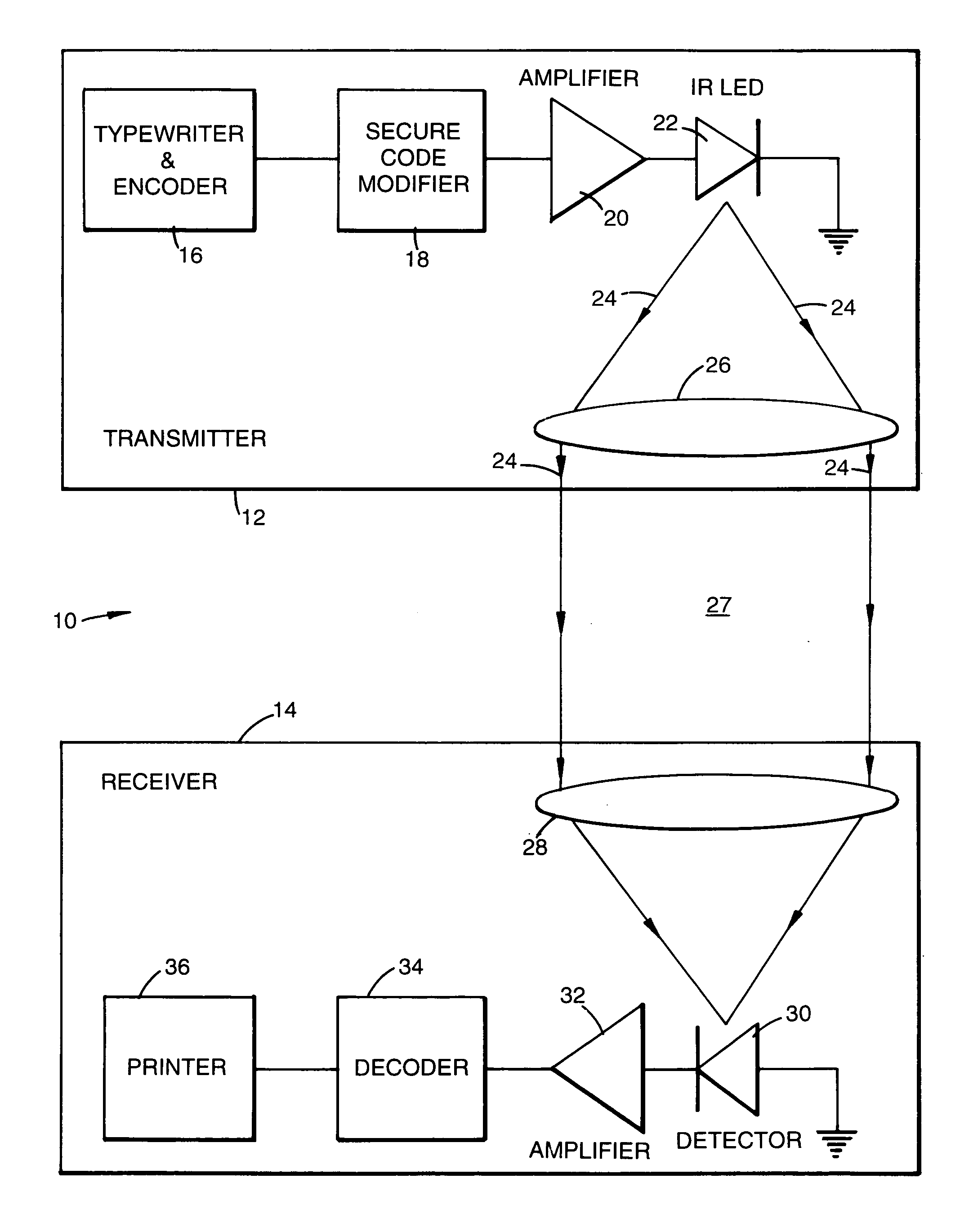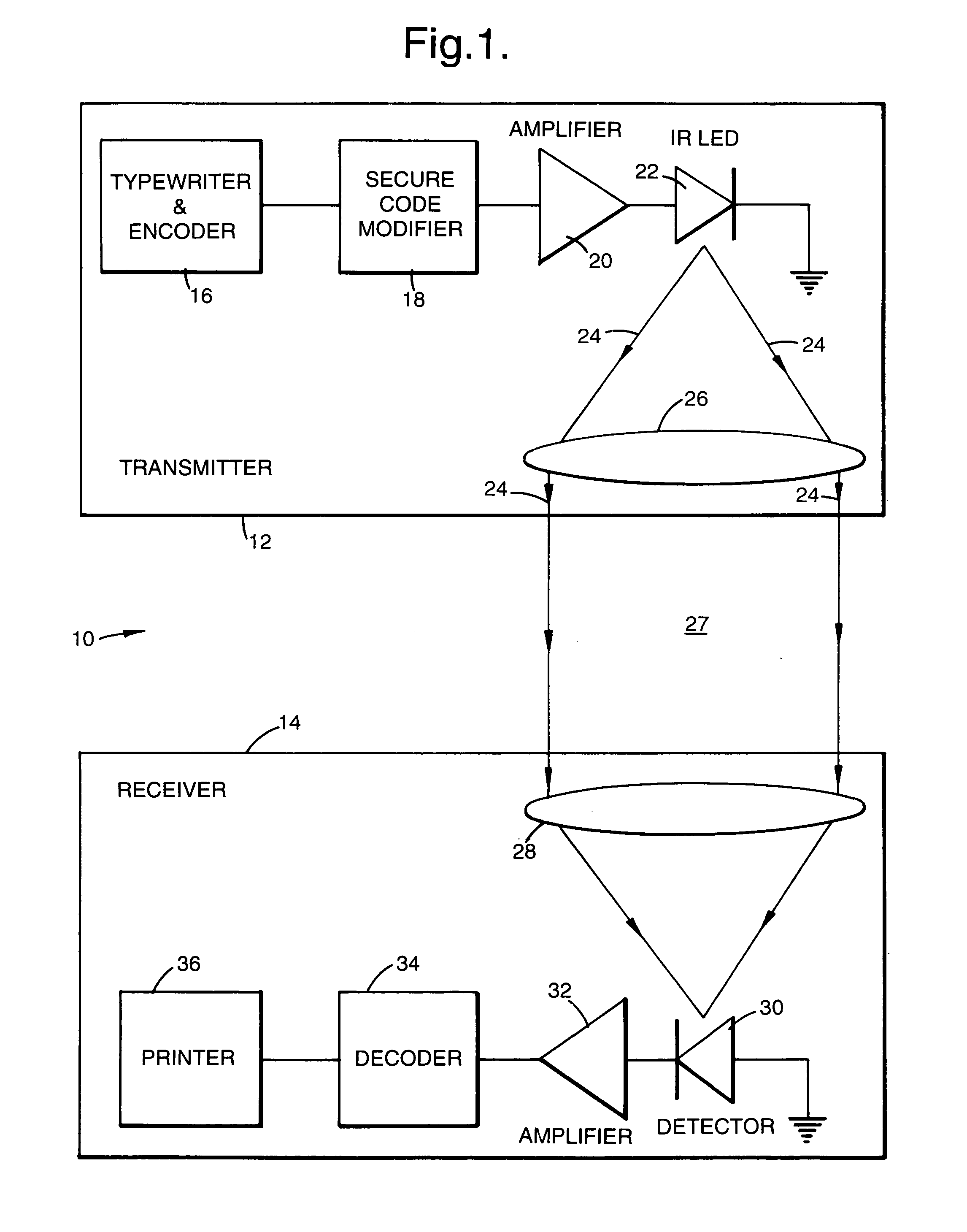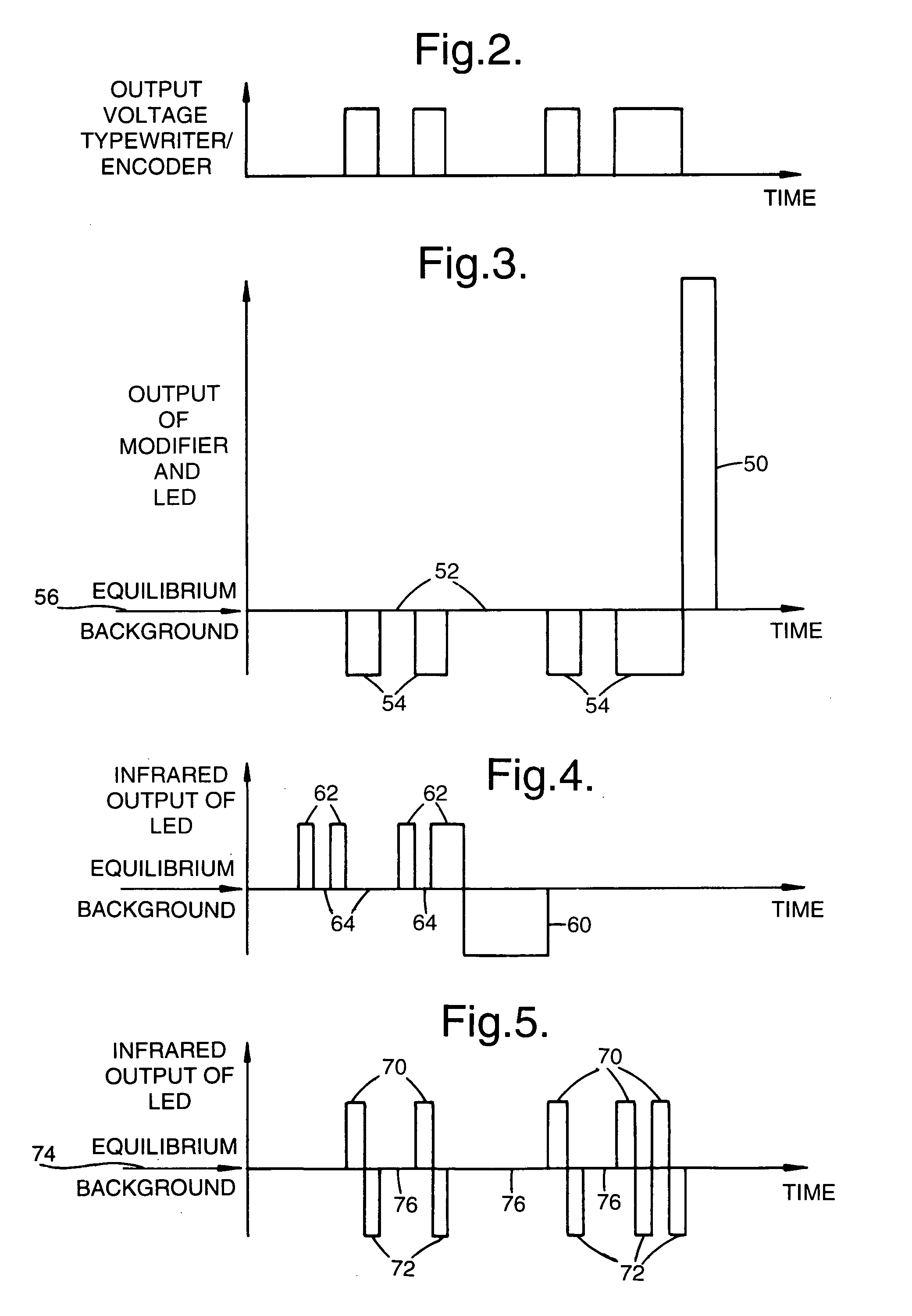Communications system
a communication system and communication technology, applied in the field of communication systems, can solve the problems of variation of the mean intensity at reception, inability to disclose a truly secure communication, and inability to easily interpret signals, and achieve the effect of superior atmospheric propagation
- Summary
- Abstract
- Description
- Claims
- Application Information
AI Technical Summary
Benefits of technology
Problems solved by technology
Method used
Image
Examples
Embodiment Construction
[0031]Referring to FIG. 1, a communications system of the invention indicated generally by 10 is shown schematically. It incorporates a transmitter 12 and a receiver 14.
[0032]The transmitter 12 incorporates a typewriter and encoder 16 connected via a secure code modifier 18 to an amplifier 20. The amplifier 20 is connected to an infrared (IR) light emitting diode (LED) 22. The LED 22 is of material appropriate for IR emission, such as for example cadmium mercury telluride or indium antimonide. It has an operating wavelength band in the range 3 μm to 15 μm, which exhibits superior propagation through smoke and mist as compared to shorter wavelengths. The LED 22 is of the kind which provides positive luminescence in response to input bias signals of one polarity and negative luminescence in response to bias signals of the opposite polarity. Negative luminescence is known. It relates to emission of less radiation than a background level, and is described by Bolgov et al, in Semiconduct...
PUM
 Login to View More
Login to View More Abstract
Description
Claims
Application Information
 Login to View More
Login to View More - R&D
- Intellectual Property
- Life Sciences
- Materials
- Tech Scout
- Unparalleled Data Quality
- Higher Quality Content
- 60% Fewer Hallucinations
Browse by: Latest US Patents, China's latest patents, Technical Efficacy Thesaurus, Application Domain, Technology Topic, Popular Technical Reports.
© 2025 PatSnap. All rights reserved.Legal|Privacy policy|Modern Slavery Act Transparency Statement|Sitemap|About US| Contact US: help@patsnap.com



